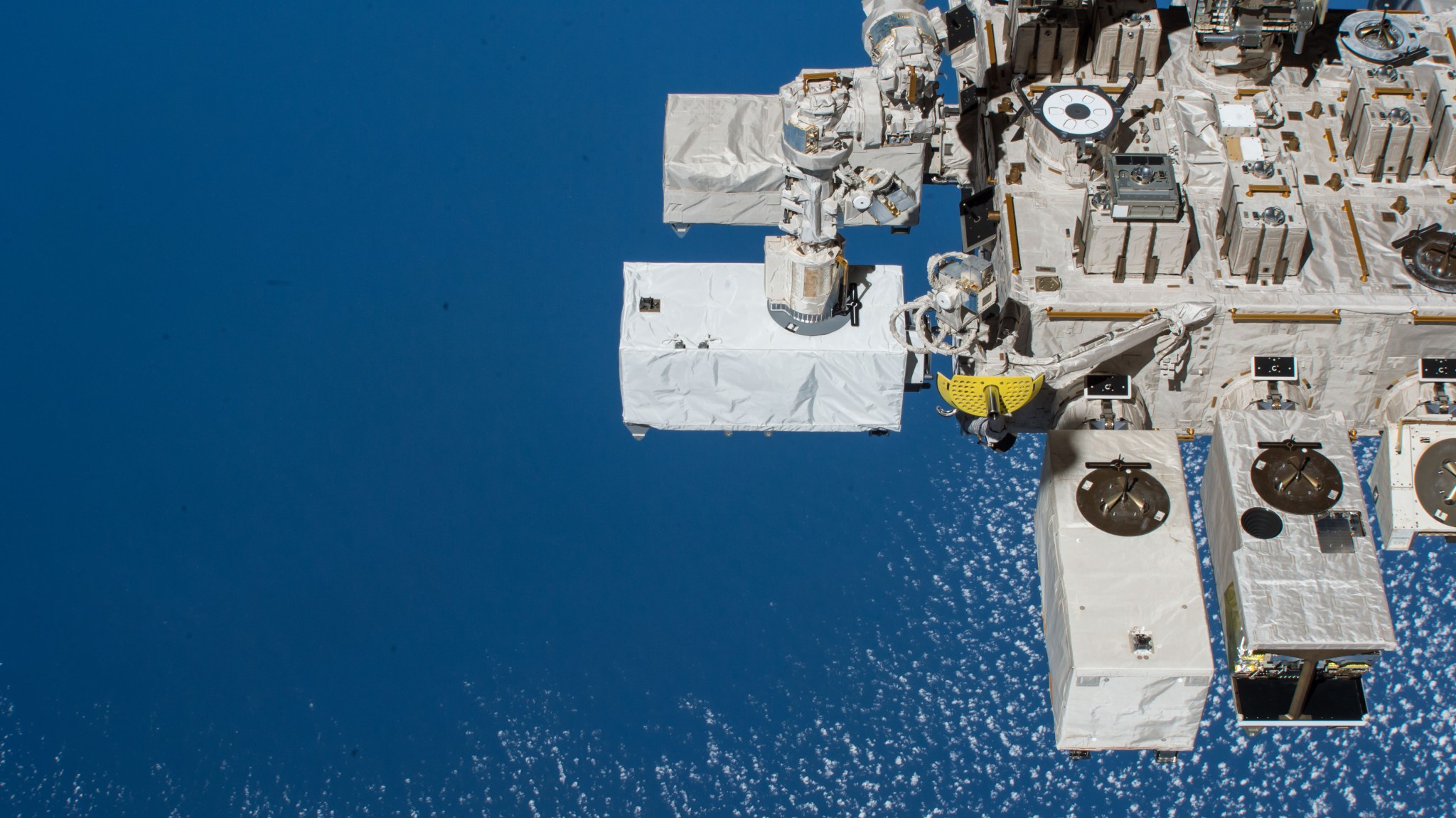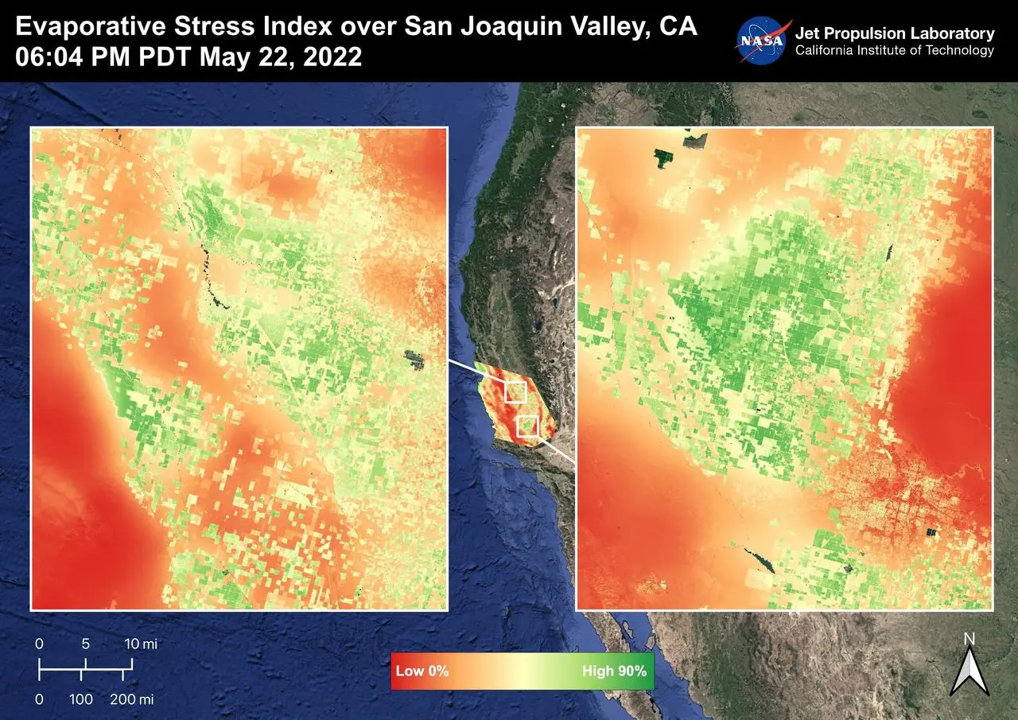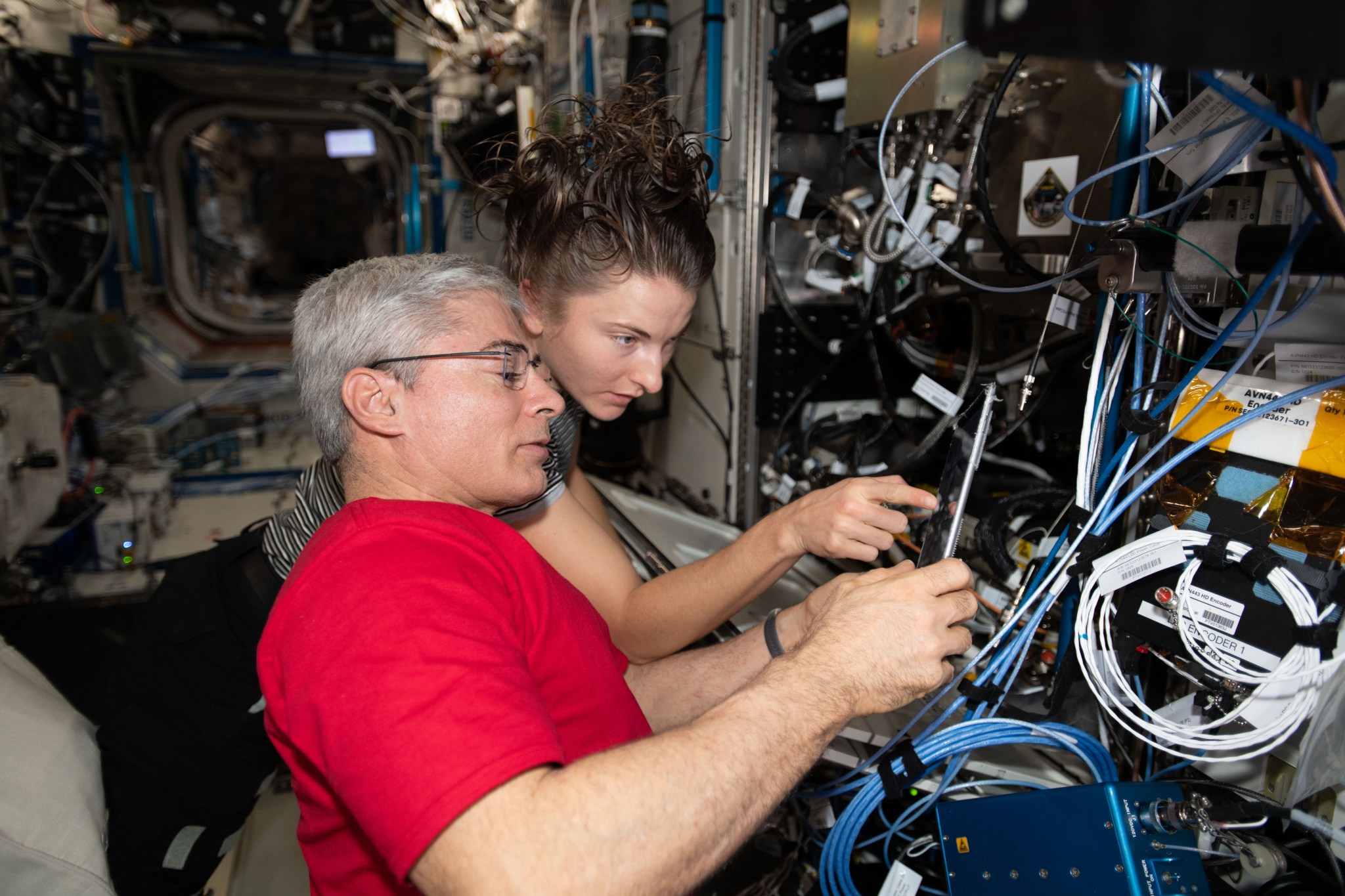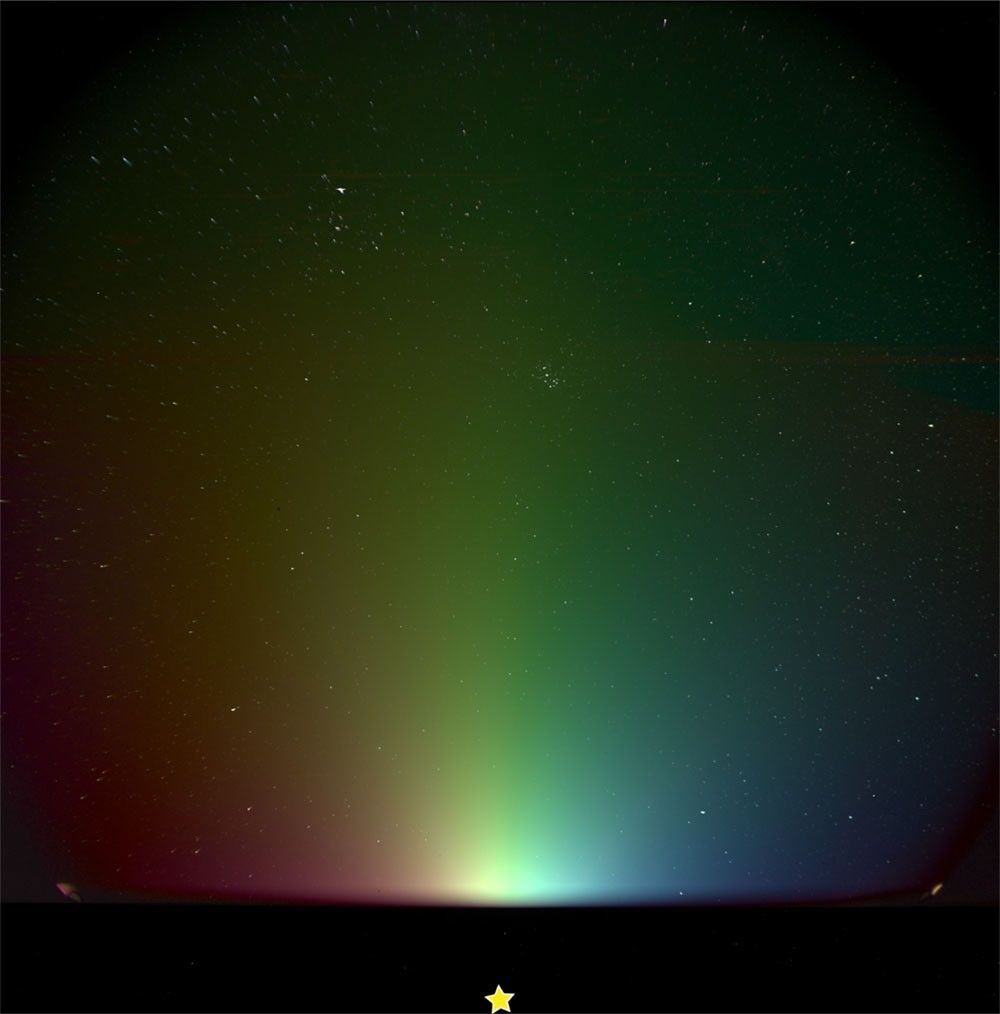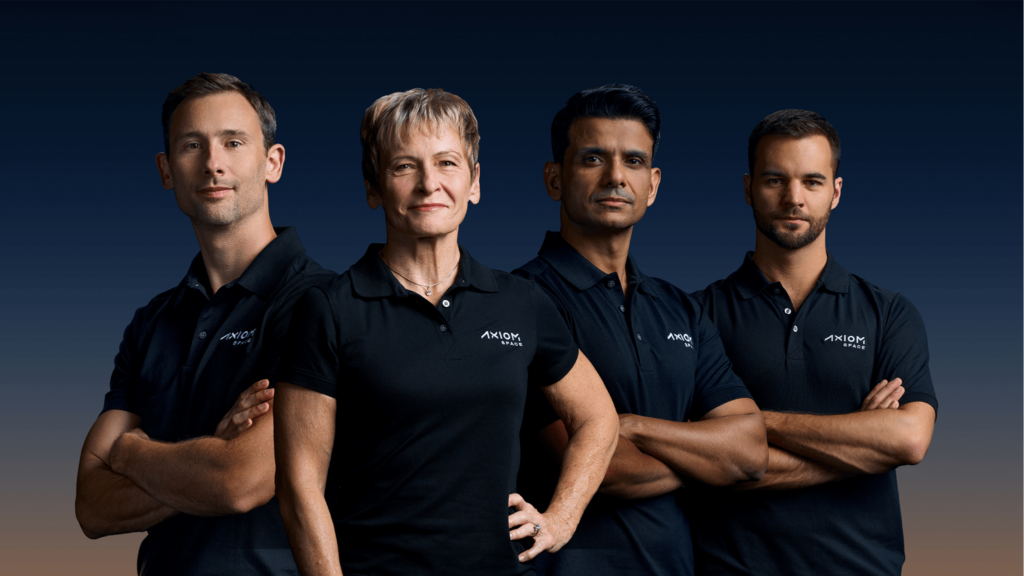Researchers found that eddies, or swirling wind patterns, increased moisture evaporation in an alfalfa field. A better understanding of the complex exchange of water and heat between the ground and atmosphere could improve remote sensing products and their use in agricultural water management.
The station’s ECOSTRESS instrument takes high-resolution thermal infrared measurements of Earth’s surface that provide data on changes in water availability, vegetation water stress, and agricultural water use. Researchers use observations from the USGS Landsat 8 and 9 satellites and ECOSTRESS to validate climate models and update data on Earth’s surface energy (the amount of energy absorbed from the Sun and radiated back into the atmosphere).
Researchers identified various properties for flow boiling using n-perfleurohexane, a fluid used to cool electronics. A better understanding of this process can improve models for designing thermal cooling systems used in the electronics, energy, aerospace, and other industries.
Flow boiling, a method of thermal management, uses the heat generated by a device to boil a liquid, generating vapor bubbles that lift the heat from the surface. The Flow Boiling and Condensation Experiment (FBCE) tested a flow boiling method in microgravity, where the process is less efficient; in the absence of buoyancy, bubbles grow larger and remain near the surface.
Researchers successfully manufactured a polymer of rare metals and other elements that showed high radiation resistance and has a suitable size and weight for use in space. This result provides knowledge that can support development of improved shielding for future spacecraft and extraterrestrial habitats.
The Roscosmos investigation Shielding Composite tested the absorbed radiation dose of two polymers during 225 days on the space station using monthly monitoring by the Pille-ISS investigation. The data showed that the material has high and stable radiation shielding characteristics. Protecting crew members and equipment from radiation is an important requirement for future long-duration space missions.

